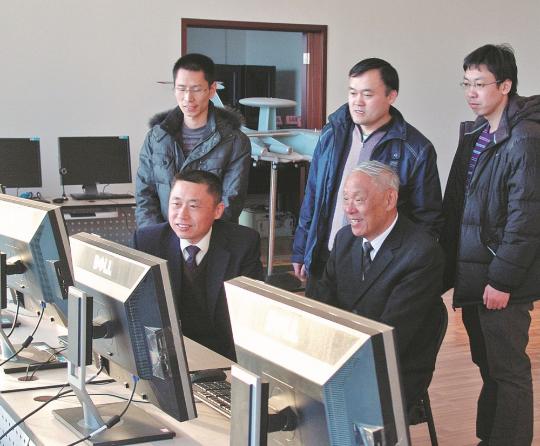'People's Scientist' title conferred on Wang Xiaomo
China's most renowned radar researcher and the father of the country's early-warning aircraft, Wang Xiaomo, also a recipient of the nation's top science and technology award, has been given the honorary title of "People's Scientist" posthumously.
The move was part of an order that was signed last week by President Xi Jinping to confer top-level medals and honorary titles on preeminent individuals for their tremendous contribution to the motherland.
Born in Shanghai in November 1938, Wang graduated from Beijing Institute of Technology's radio engineering department in 1961 with a bachelor's degree in radar technology, and then joined the Nanjing Research Institute of Electronics Technology in Jiangsu province, now part of China Electronics Technology Group Corp, to start his career as a military radar designer.
In 1969, Wang and hundreds of his colleagues at the Nanjing institute were sent to a remote underdeveloped city named Duyun in Guizhou province, to help establish the East China Research Institute of Electronic Engineering, which was later relocated to Hefei in Anhui province, and is now a China Electronics Technology Corp subsidiary.
In 1972, he was named head designer of China's first three-dimensional radar and spent nearly 13 years with his team on its research and development.
The radar system, named Type 383, extensively improved the nation's air-defense capability and won Wang his first National Science and Technology Advancement Award in 1985, the same year he was named director of the East China Research Institute of Electronic Engineering.
In 1992, he was appointed head of the military products bureau under the then-China Electronics Industry Corp, the predecessor of CETC.
A year later, Wang became executive vice-president of the China Academy of Electronics and Information Technology.
He was elected a member of the Chinese Academy of Engineering in 1995 and won his second National Science and Technology Advancement Award the same year, for his role in the design of an advanced low-altitude surveillance radar.
From the mid-1990s to the early 2000s, Wang was tasked with leading the research and development of China's first domestic early-warning aircraft system, later known as the KJ-2000.
Under his leadership, researchers and engineers overcame many difficulties and developed world-class technologies previously dominated by a handful of Western powers.
Wang once recalled that during the years when he led the KJ-2000 project: "I was always convinced that we, the Chinese researchers, could definitely make it. I was sure that we would build an early-warning aircraft on our own."
In October 2009, the KJ-2000 made its debut show at a National Day parade.
In 2010, Wang received his third National Science and Technology Advancement Award for his work on the KJ-2000 project.
In addition to the KJ-2000, Wang was also known for his role as the chief designer of the ZDK03, China's first export version of an advanced early-warning aircraft.
In 2013, Wang was given the State Scientific and Technological Award, the highest honor for Chinese science and technology workers.
He died in March last year at a hospital in Beijing, aged 84.

